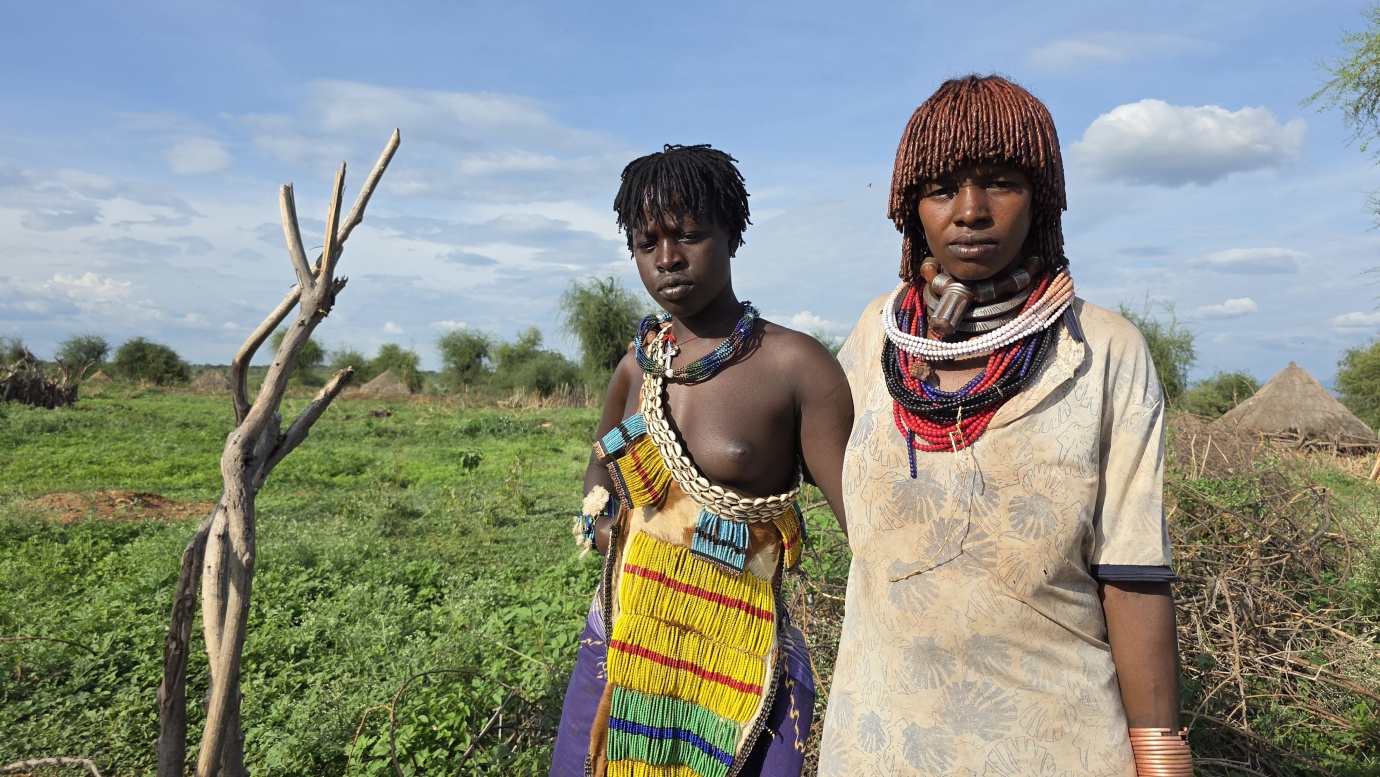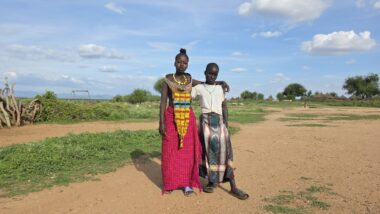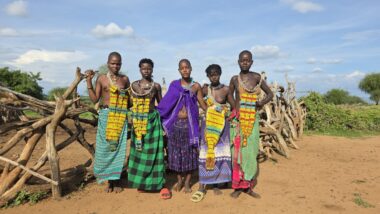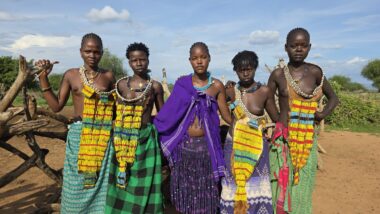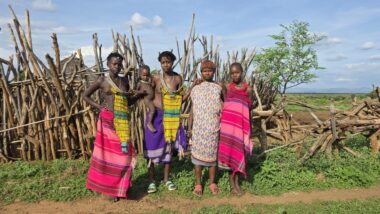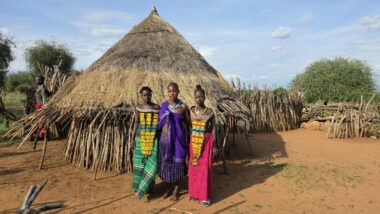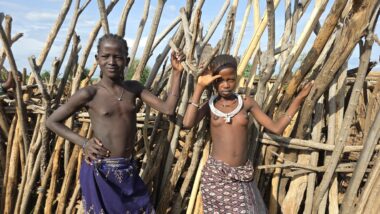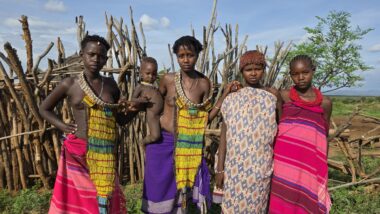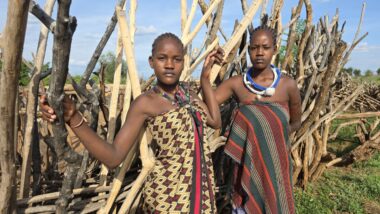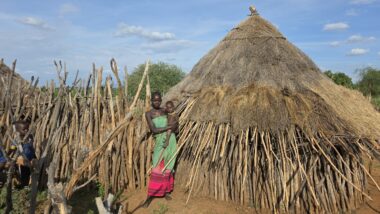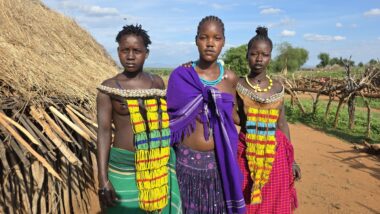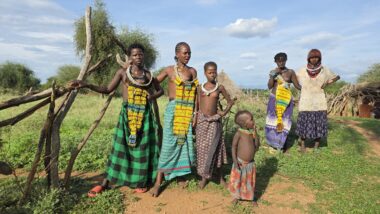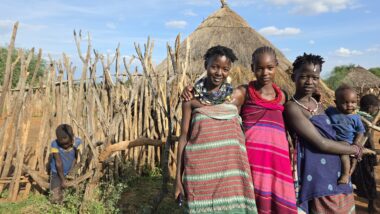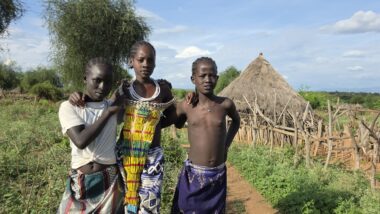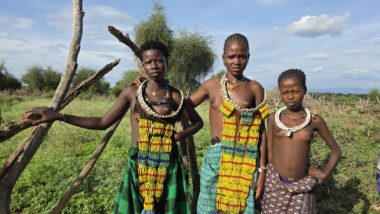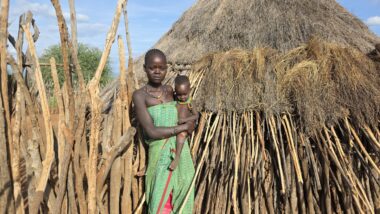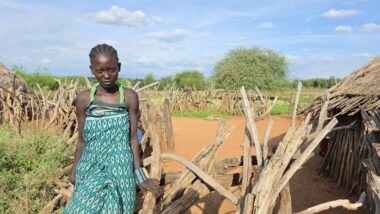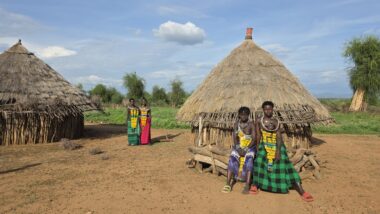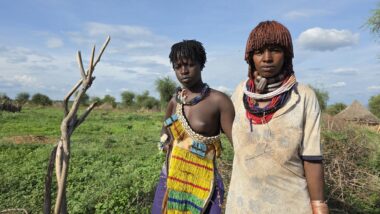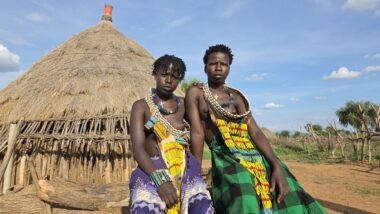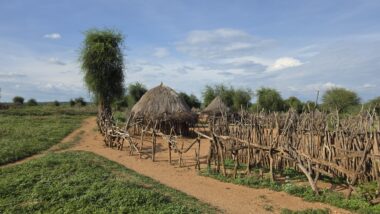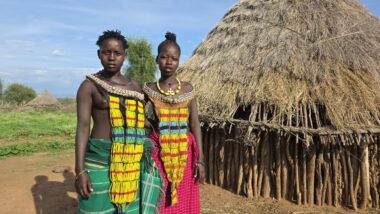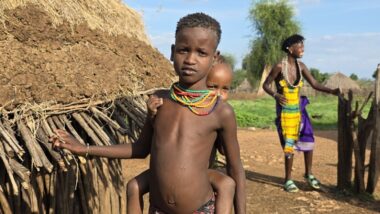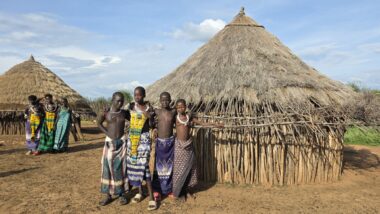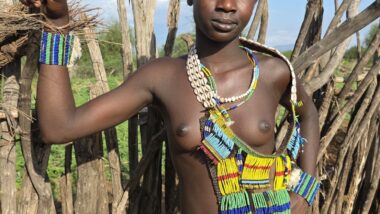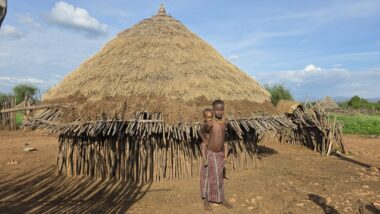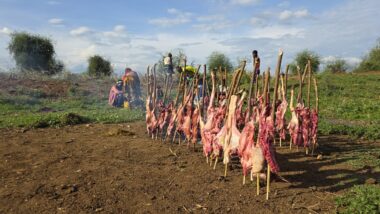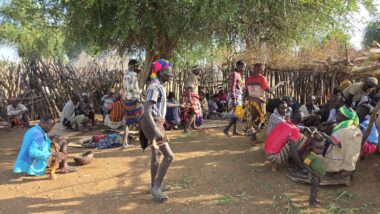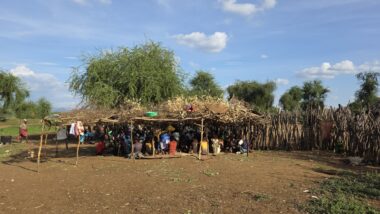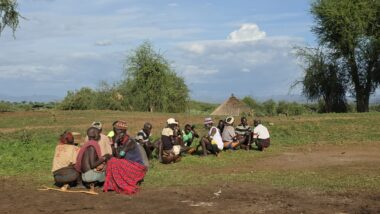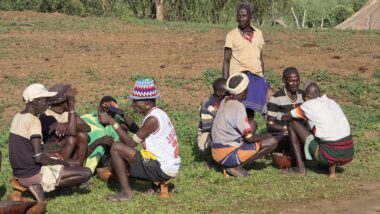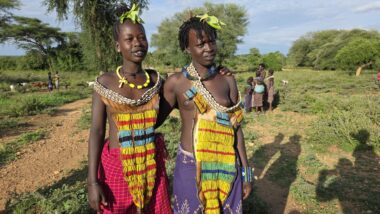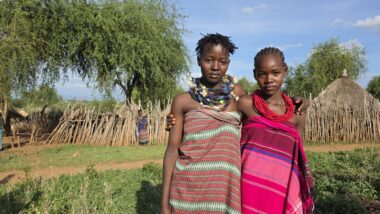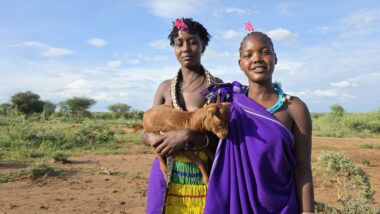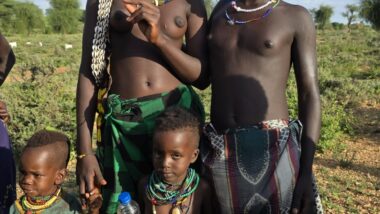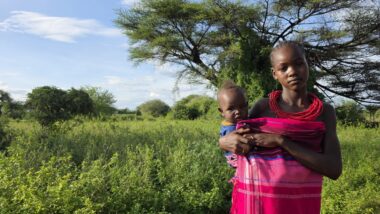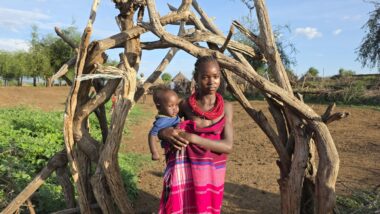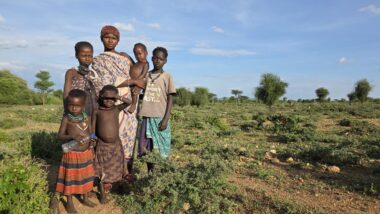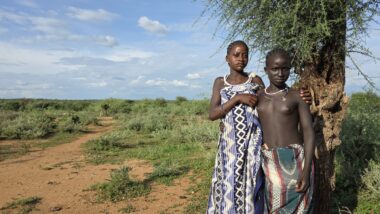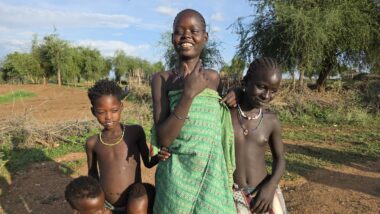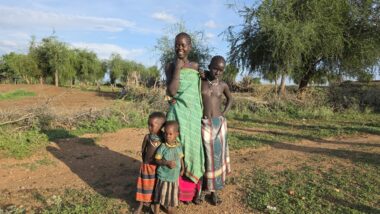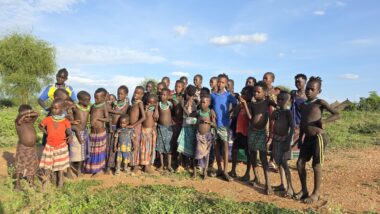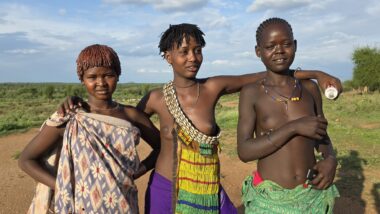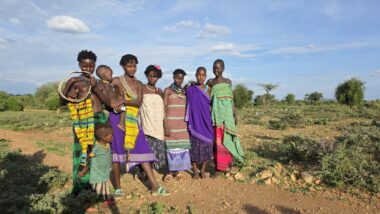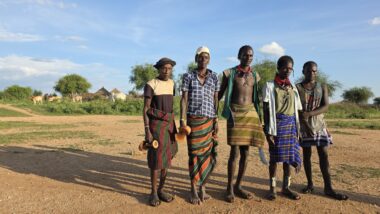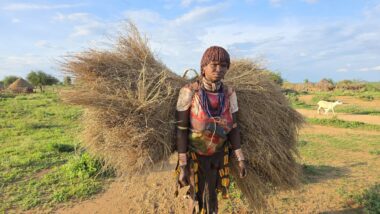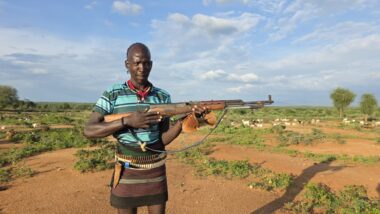In the late afternoon, we visited the friendly village of the Hamer tribe, just a few kilometres outside Turmi. It’s an Omotic ethnic group living in the Omo Valley of southwestern Ethiopia. They are primarily semi-nomadic pastoralists and are known for their distinct cultural practices and elaborate body adornment. The 2007 national census reported a population of over 46,500 people, though current figures may be higher (🎟️1,000 ETB, 📷50 ETB / person, guide 1,000 ETB).
The history of the Hamar tribe is marked by resistance against external control, most notably during the expansion of the Ethiopian empire under Emperor Menelik II in the late 19th century. European explorers had little impact, but Menelik’s troops eventually incorporated the Hamar people into the Ethiopian state through military campaigns, which led to significant violence and the enslavement of many Hamar. This led to some being forced to displace to lowland areas to escape imperial control.
Hamer families live in circular arrangements of tents, with their cattle kept in the centre for safety. Their society is organised through a complex age-grade system, with movement between groups marked by specific rituals. Hamer men practice polygamy, with the number of wives sometimes indicated by the number of huts in a compound. Cattle ownership is highly valued and can enhance a man’s social status. This sometimes leads to conflicts with rival tribes over grazing land.
Hamer people use elaborate body decorations to signify social status and identity. Women wear heavy, polished iron necklaces, copper-colored hair clay, and decorated goatskins. The kalle, a unique metal plate worn by young unmarried women, signifies their status. Men decorate themselves with beads and other items.
The famous bull-jumping ceremony is a key rite of passage for young Hamer men as they enter adulthood. The ritual involves running and jumping across the backs of a line of cattle. During this ceremony, Hamer women are whipped to show their devotion to their male kin. The women willingly submit to the floggings and take pride in their scars.


